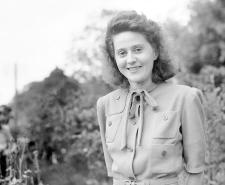
Read more about Women's history

During World War II, there were plenty of separate groups that had their own specific roles to play. One of these groups were the women from the Air Transport Auxiliary. Although the ATA’s tasks were originally intended to be different, they ended up being vital when it came to transporting aircraft to those who needed them most.
Join us here at Sky HISTORY as we examine the role of the women of the Air Transport Auxiliary in further detail.
Established at the beginning of the Second World War, the Air Transport Auxiliary – or the ATA, was a civilian organisation in Britain tasked with ferrying military aircraft from various locations to where they were needed.
Crucial to the war effort, they worked tirelessly to ensure that the Royal Air Force was equipped and ready to go when the call came. The group transported both new and newly repaired aircraft, often taking them from assembly plants and factories. The aircraft were then ferried between locations such as maintenance units, active airfields and service squadrons, scrapyards and transatlantic delivery points. The only places that the ATA did not deliver aircraft to were naval aircraft carriers.
The ATA was initially set up to be a transportation service for medical supplies, mail and personnel. This changed however, when the RAF’s significant needs became clear. All ferrying responsibilities were taken on by the ATA by 1st August 1941, allowing the previous ferrying pilots to take on combat roles.
A women’s division of the ATA began to come together in November 1939. This was when Commander Pauline Gower was tasked with forming the women’s section. On New Year's Day 1940, eight women were accepted into the women’s division and by the end of the war, around 160 women had been employed in the ATA.
The initial eight members were:
At first, the women were only able to fly the Tiger Moth biplane. They were also paid 20% less than the men, but this isn’t too surprising, as it was common practice at the time. This eventually changed due to Pauline Gower’s influence. The women went on to fly any kind of aircraft, such as Spitfires, Hurricanes and even heavy bombers like Flying Fortresses. The women also received equal pay thanks to Gower, which was a major step in the right direction for women’s equality.
The primary duty of the ATA was, as mentioned, ferrying aircraft. They would also service and repair aircraft and move them between airbases as and when needed. On occasion, the ATA would also fly air ambulance missions, wherein medical supplies and injured personnel would be transported. Other transportation missions were also undertaken by the ATA and the women’s division, such as ferrying service personnel when road or rail transportation wasn’t viable.
All of the women in the ATA are notable and should be commended for their service and bravery. That being said, some women excelled and have become known for their various feats while in the ATA. Some notable female members include:
These are just a few notable members of the ATA women’s section. It’s important to remember how revolutionary the women's division was. Because of this, and because of their hard work and sacrifice (many died in accidents), every single woman involved should be remembered for their service.
Want to stay up to date on all sorts of historical topics? Then be sure to subscribe to the Sky HISTORY newsletter! By doing so, you’ll get exclusive access to all the latest news, videos and articles.